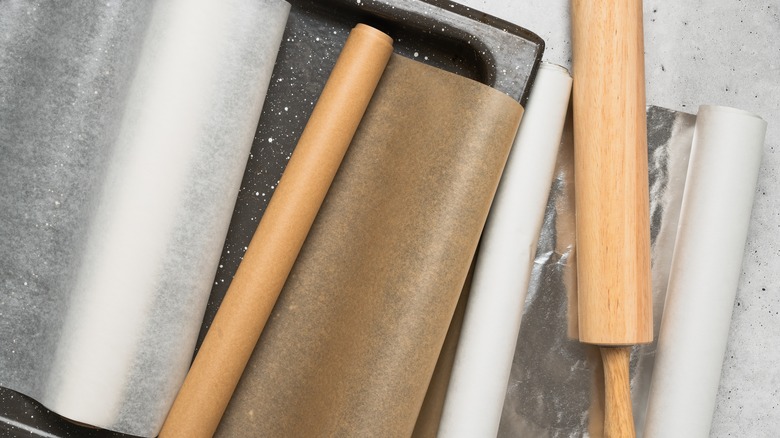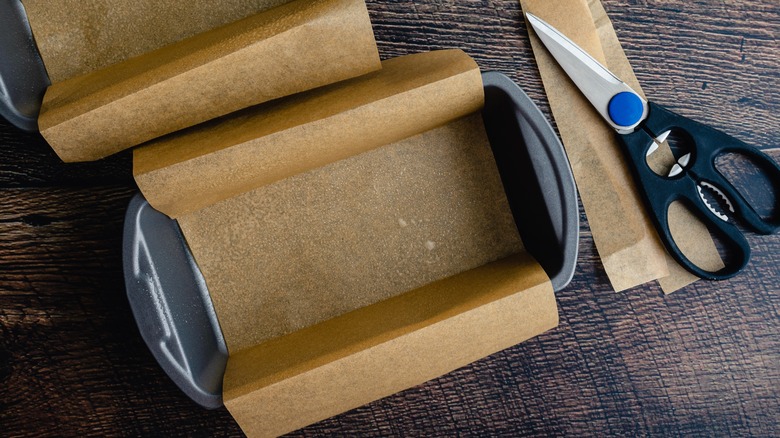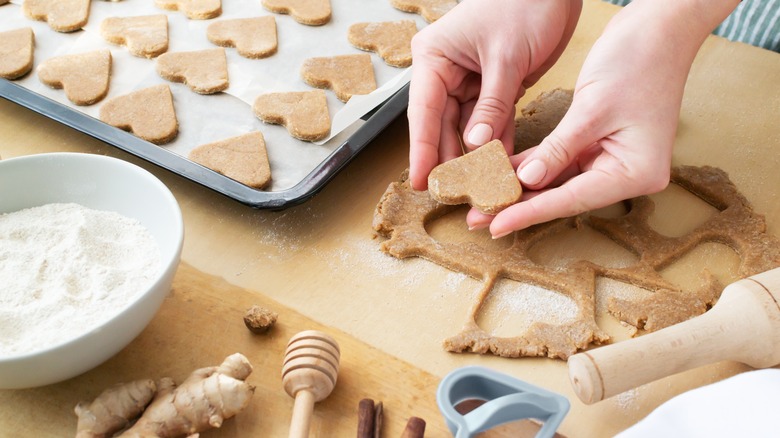Why Using The Shiny Side Of Parchment Paper Actually Matters
After a long day in the kitchen, there are few things worse than realizing your cake is stuck in the pan. Or opening the oven to find your roasted sweet potatoes have become one with your baking sheet. We've all been there. Thankfully, parchment paper helps decrease those heart-stopping moments.
Not to be confused with wax paper — which you should keep away from hot ovens — parchment paper is nonstick, oven-safe, and easy to trim. Bakers and cooks trust it to protect their cookware from burnt bits and tough stains. But take a closer look at the paper, and you'll sometimes notice that one side is glossy and the other side is dull. It's tempting to assume both sides are created equal, but that's not always the case.
The paper gets its shine and heat protection from a silicone coating. While some manufacturers dip both sides of their sheets in the protective adhesive, others do not. To get the full benefit of the parchment liner, it's important to check your roll and make sure the glossy side points up.
How parchment paper works
Parchment paper gets its power from the same material used to make reusable baking mats: silicone. The polymer is an insulator, which means it heats evenly, but it won't hold onto that heat for long. After sitting for a few minutes on the counter, it will be cool to the touch. The rubbery substance also resists the pull of sticky foods, allowing spatulas to do their thing with ease.
Though both are helpful, parchment paper has a few advantages over silicone mats. Bakers can trim it to fit any shape or mold, and cooks can cut it down to size before lining their air fryers and trays. The thinness of the liner also allows heat to penetrate quickly and deeply, resulting in caramelized roasted vegetables and toasty brown sheet pan dinners. To make sure the paper stays put, dab or spray water on the tray first.
However, it's important to note that the liners are only intended to withstand temperatures up to 425 to 450 degrees Fahrenheit, so it's not a good choice when you need to use the broiler — try greased aluminum foil instead.
Hot and cold tips for using the liner
Once you've got the hang of placing the shiny side of the parchment paper up to ensure the best possible baking results, there are plenty of other creative ways to use the kitchen tool. One classic method is the French technique en papillote or cooking in a pouch. The paper allows fish or vegetables to gently steam in the oven, like in this salmon en papillote with persillade recipe.
Outside of the oven, you can also employ a parchment paper hack for storing raw bacon that takes advantage of the wrapping approach. With a few simple folds, the material can protect leftover ingredients — like bacon slices — before they go into the freezer. At room temperature, a nonstick sheet can keep surfaces clean while you ice cakes, dip chocolate-coated treats, and roll out dough. Parchment paper can even go in the microwave – though at roughly $4 to $5 for a 50-square-foot roll, it's worth saving for messier projects.



